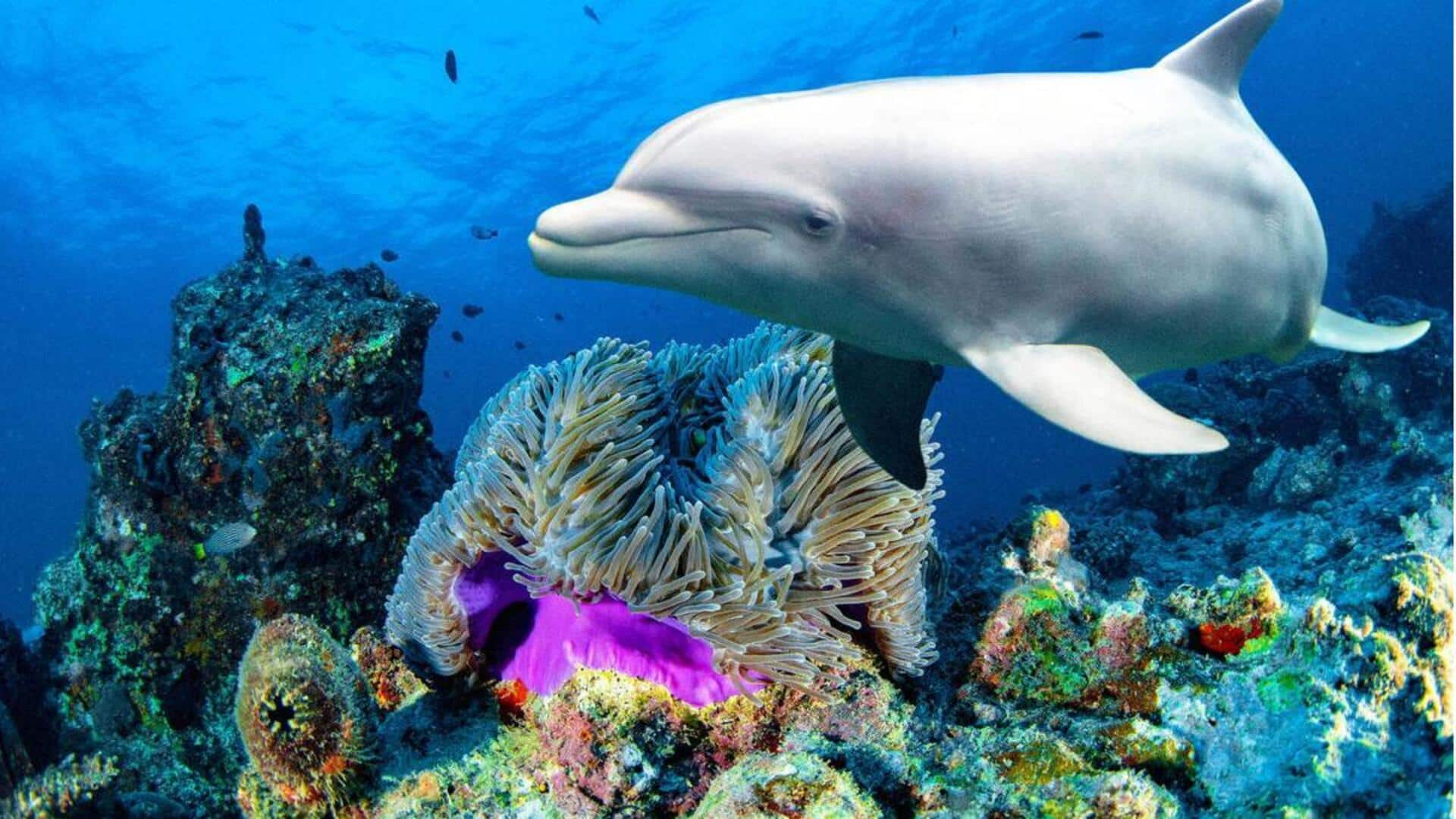
Microplastics detected in dolphin breath for the first time
What's the story
In a troubling discovery, scientists have found microplastics in the exhaled breath of dolphins for the very first time.
The research, published in PLOS One, highlights the widespread presence of plastic waste across different ecosystems.
The study suggests that inhalation could be a major pathway through which dolphins and other marine mammals are exposed to these tiny plastic particles.
Pollution impact
A global environmental concern
Microplastics are tiny plastic pieces that come from the breakdown of bigger plastic products.
These particles have been linked to inflammation and damage to cells, and can also carry toxic chemicals.
Leslie B. Hart, co-director at the Center for Coastal Environmental and Human Health in South Carolina, who led this research highlighted the extent of plastic pollution by saying, "We have plastic everywhere. There's really no safe place to get away from it."
Research focus
Dolphins: Sentinels of marine pollution
Dolphins are frequently the subject of pollution studies, as they are found all over the world, even in crowded coastal areas.
This makes them a good indicator of exposure to pollution and other environmental threats.
The finding of microplastics in their breath is a worrying development that underscores the scale of plastic contamination in our oceans and its possible effects on marine life.
Wider implications
Microplastics: A threat to wildlife and humans
The problem of microplastic inhalation isn't just restricted to marine life.
Last year, Japanese scientists had discovered microplastics in the lungs of wild birds.
Humans are estimated to inhale or ingest over 100,000 microplastic particles every year from food, water, and air.
These findings highlight the dire need for global action to combat plastic pollution and safeguard wildlife and human health.